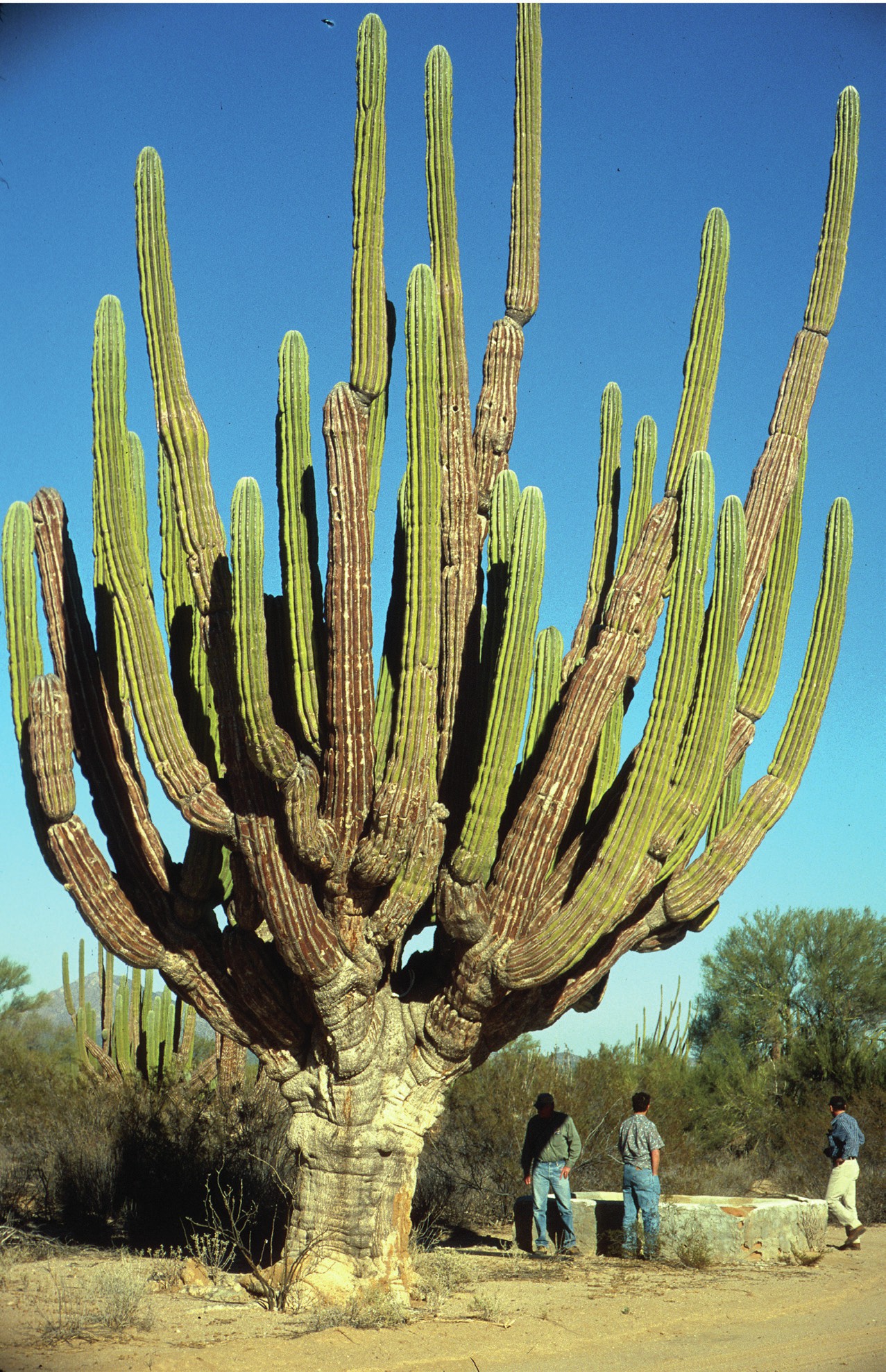
The Cardón cactus grows in the Sonoran desert of Baja California and Mexico, where some plants grow taller than 20 m. Conditions are harsh, however, and these cacti are very slow growing — only about 2.5 cm per year. The largest specimens are estimated to be 200–300 years old.
Young plants gain protection from large numbers of strong spines. These spines are modified leaves — an adaptation that limits water loss in cacti. The spines do not photosynthesise, and are lost as the plant grows. Photosynthesis takes place in the upright columns of ridged stems, which are supported by woody vertical ribs. The stems present a large surface area to the morning and evening sun, but a small surface area to the scorching heat of the midday sun. The ridges allow the stems to expand and contract like a concertina, storing water on the rare occasions when it becomes available.
Your organisation does not have access to this article.
Sign up today to give your students the edge they need to achieve their best grades with subject expertise
Subscribe




